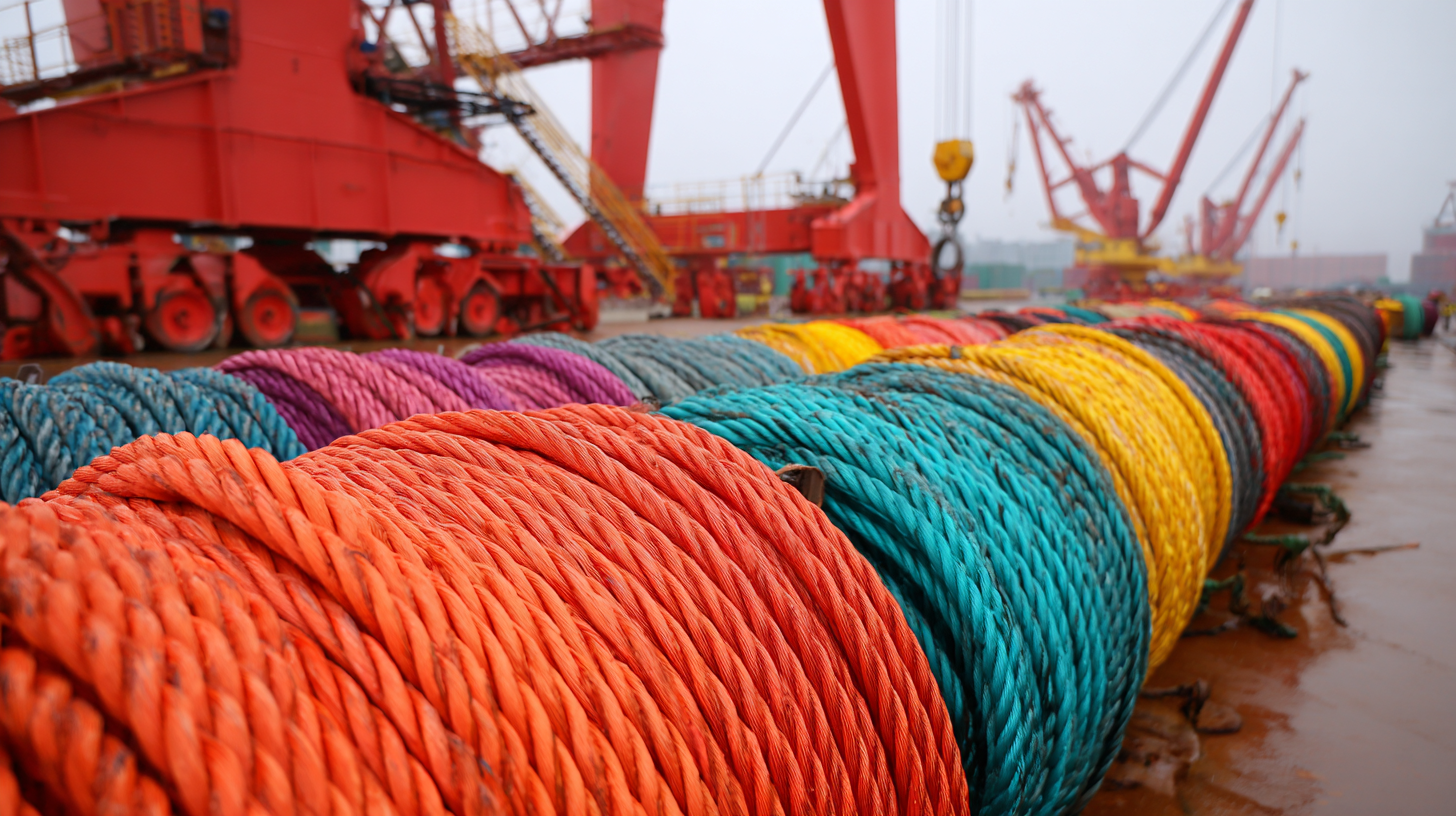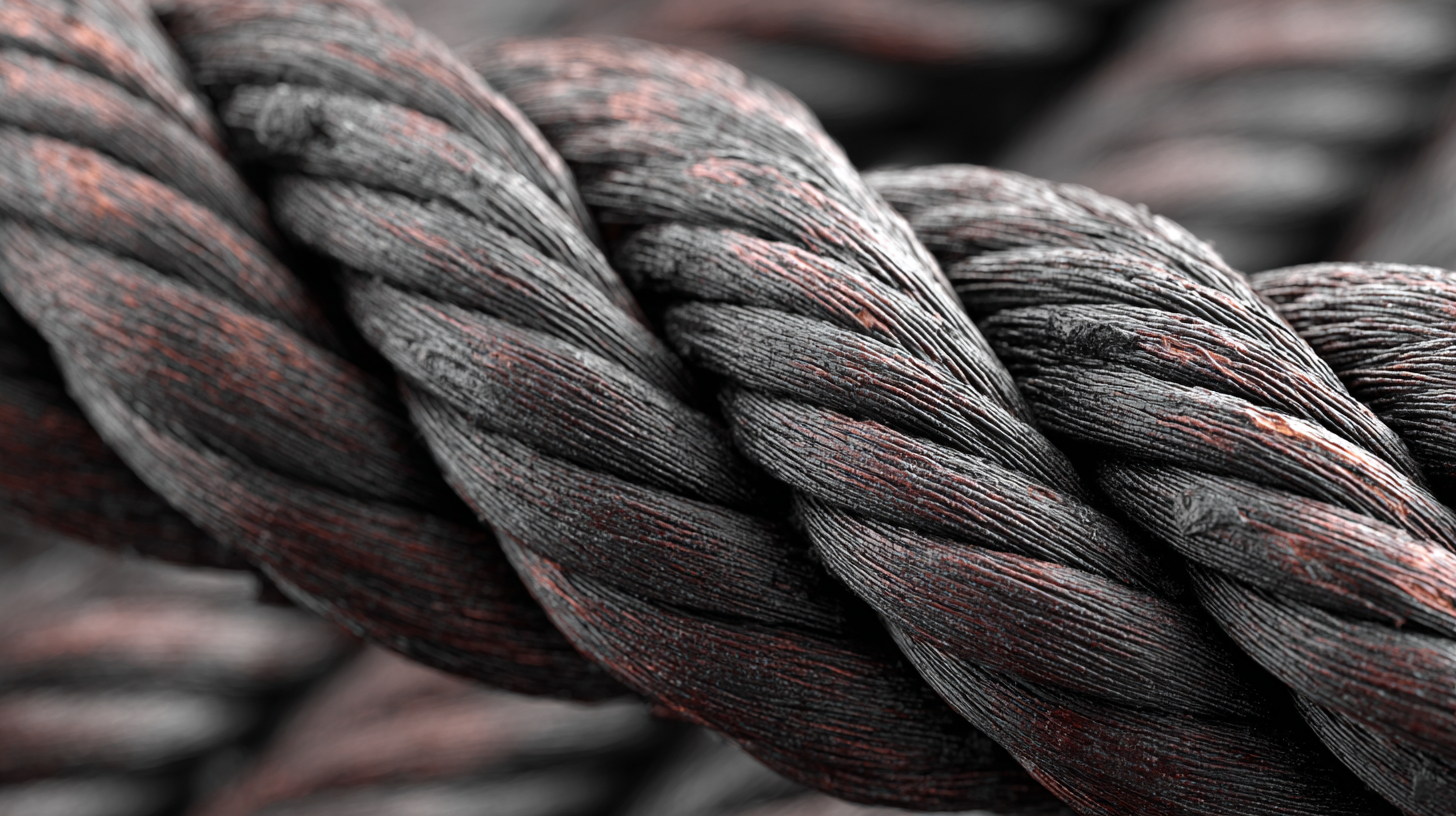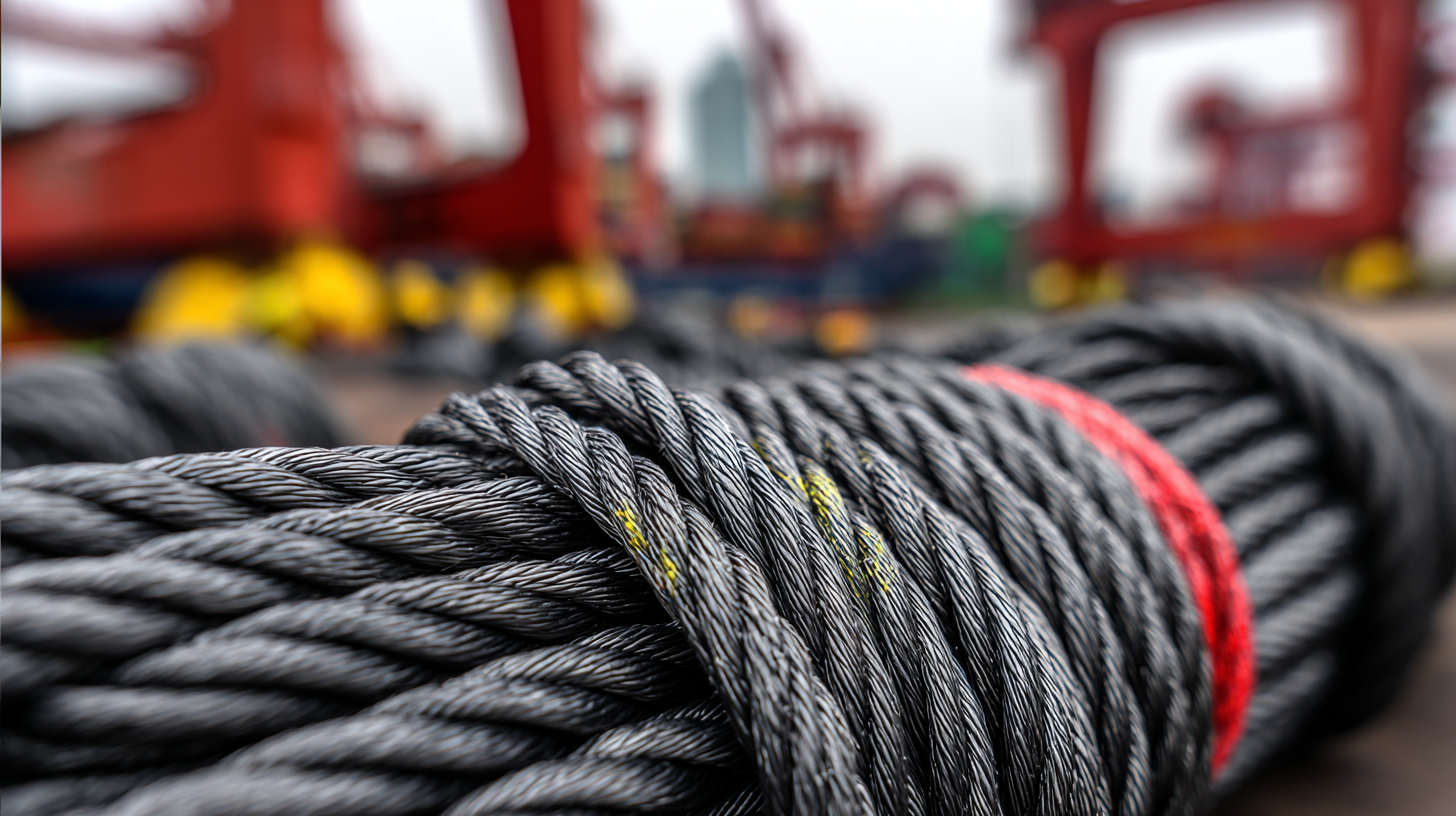Understanding the Challenges Faced in Sourcing Best High Tensile Crane Rope for Global Procurement
In the ever-evolving landscape of global procurement, sourcing the best High Tensile Crane Rope presents a unique set of challenges that industry professionals must navigate. According to a recent report by ResearchAndMarkets, the global crane rope market is projected to grow significantly, driven by the increasing demand for heavy lifting and construction activities. The durability and strength of high tensile crane ropes are paramount, with tensile strength often exceeding 1800 MPa, ensuring safety and efficiency in operations. However, factors such as material quality, supplier reliability, and compliance with international standards complicate the procurement process. This blog aims to explore the multifaceted benefits of high tensile crane ropes, while also examining the difficulties faced by sourcing professionals in securing the best materials that align with both operational needs and industry regulations.

Challenges in Identifying the Right High Tensile Crane Rope Materials in Global Markets
Sourcing high tensile crane rope materials in global markets presents a myriad of challenges that procurement teams must navigate. One of the primary hurdles is the sheer variety of materials available, each with different specifications and performance characteristics. Understanding the specific requirements for strength, durability, and flexibility is essential, yet many suppliers offer vague descriptions that can lead to misinformed purchasing decisions. Consequently, procurement professionals must engage in thorough research, often requiring expertise that may not be readily available within their organizations.
Another significant challenge is the inconsistency in quality standards across different countries and manufacturers. What may pass as acceptable quality in one market may not meet the stringent safety and performance regulations in another. This inconsistency complicates the selection process, as buyers must not only compare prices but also assess the reliability and reputation of suppliers. Establishing strong relationships with manufacturers and seeking ISO-certified products can mitigate these risks, but it often demands considerable time and resources. Adaptability and vigilance are crucial for successfully navigating these complexities in the pursuit of the best high tensile crane rope.

The Role of Certification Standards in High Tensile Crane Rope Procurement
In the global procurement of high tensile crane ropes, adherence to certification standards is crucial for ensuring quality and safety. According to a report from the International Organization for Standardization (ISO), approximately 40% of equipment failures in lifting operations can be attributed to substandard materials. This emphasizes the necessity of sourcing rope that meets established standards, such as EN 13414, which outlines the requirements for steel wire ropes. These standards not only confirm the rope’s tensile strength but also address its manufacturing integrity, leading to safer work environments.
Tips: Always verify the certification of your suppliers. Request documentation that illustrates compliance with industry standards, as this will help you mitigate risks associated with poor-quality products. Additionally, engage with certified testing laboratories for an independent evaluation of the ropes you intend to purchase.
Furthermore, the sourcing process should involve assessing the certifications of the supplying companies as well. A report by the American National Standards Institute (ANSI) highlighted that suppliers with robust compliance programs significantly reduce liability exposure. Selecting suppliers who are ISO-certified or have other relevant credentials ensures a higher level of assurance in the materials provided, fostering both operational efficiency and safety in crane operations.
Tips: Collaborate closely with suppliers who demonstrate a commitment to quality assurance practices. Regular audits and open communication about standards can help preemptively identify potential issues, ultimately leading to a more reliable procurement process.
Evaluating Performance Metrics: Key Factors for High Tensile Crane Rope Reliability
When it comes to sourcing high tensile crane rope for global procurement, evaluating performance metrics is crucial for ensuring reliability and safety. Key factors include tensile strength, elasticity, and resistance to wear and environmental influences. Tensile strength measures the rope's ability to withstand heavy loads without breaking, while elasticity ensures it can absorb shocks and prevent sudden failures during operation.

Another significant aspect is the rope's durability against abrasion and chemical exposure. Many operational environments are harsh, and a rope that can resist wear from constant friction or damage from chemicals will ultimately enhance safety and reduce costs associated with frequent replacements. Additionally, assessing the consistency of the manufacturer's quality control processes is vital. High-quality ropes produced under stringent standards not only contribute to performance but also instill confidence in procurement teams responsible for sourcing these critical components. By focusing on these performance metrics, organizations can make informed decisions that prioritize safety and efficiency in their operations.
Cost Analysis of Sourcing High Tensile Crane Rope Across Different Regions
When sourcing high tensile crane ropes for global procurement, understanding the cost implications across different regions is crucial. Various factors such as raw material availability, labor costs, and transportation expenses significantly impact the overall pricing. For instance, regions rich in natural resources may offer lower base material costs, while areas with higher wages might burden the procurement process with inflated labor costs. Consequently, businesses must conduct thorough cost-benefit analyses to identify the most economically viable sourcing locations.
Furthermore, the logistics of transporting high tensile crane ropes can vary markedly between regions, adding another layer to the cost analysis. Delays in shipping or unexpected tariffs can quickly erode any initial savings realized through low material costs. To mitigate these risks, companies should assess not only the material price but also the entire supply chain's efficiency. A comprehensive understanding of regional economic conditions, coupled with careful planning and strategic sourcing decisions, can lead to better financial outcomes while ensuring access to high-quality crane ropes necessary for heavy lifting operations.
Understanding the Challenges Faced in Sourcing Best High Tensile Crane Rope for Global Procurement - Cost Analysis of Sourcing High Tensile Crane Rope Across Different Regions
| Region |
Average Cost per Meter (USD) |
Lead Time (Days) |
Quality Rating (1-10) |
Availability (%) |
| North America |
$5.00 |
15 |
9 |
95 |
| Europe |
$6.50 |
20 |
8 |
90 |
| Asia |
$4.00 |
30 |
7 |
85 |
| South America |
$7.00 |
25 |
6 |
80 |
| Africa |
$8.50 |
35 |
5 |
75 |
Trends and Innovations Impacting High Tensile Crane Rope Sourcing Decisions
High tensile crane rope sourcing is increasingly influenced by emerging trends and innovations reshaping procurement strategies. As organizations aim to enhance supply chain resilience, the integration of technologies such as deep learning (DL) and machine learning (ML) has become crucial. These technologies streamline supplier selection processes and improve inventory control, which is essential as firms seek to optimize their procurement decisions. A recent report suggests that up to 30% of procurement costs can be reduced through effective use of these advanced techniques, making them vital for organizations navigating complex global supply chains.
Moreover, the emphasis on ethical sourcing and sustainability continues to rise. Today's consumers are more aware of the implications of their purchasing decisions, pushing businesses to ensure that the materials used, including crane ropes, adhere to ethical production practices. Studies indicate that companies that prioritize sustainable sourcing report a 15% increase in customer loyalty and brand reputation. Consequently, high tensile crane rope suppliers must not only focus on performance but also on the ethical standards and sustainability of their production methods to meet market expectations and drive value across the supply chain.

Home
About Us
Products
Stainless Steel Anchor Chain
Manganese Steel Lifting Chain Grade 80
Manganese Steel Lifting Chain
Hastelloy Round Bars
Hastelloy Sheet
Hastelloy steel pipe
Stainless steel wire rope
Stainless steel round
Stainless steel hexagonal rod
Stainless steel strip
Plastic coating wire rope
Stainless steel plate
Stainless steel angle
Stainless steel pipe
Stainless steel wire
Stainless steel flange
Stainless steel channel
Stainless steel flat steel
Industries
News
Service
Blog
Contact Us


